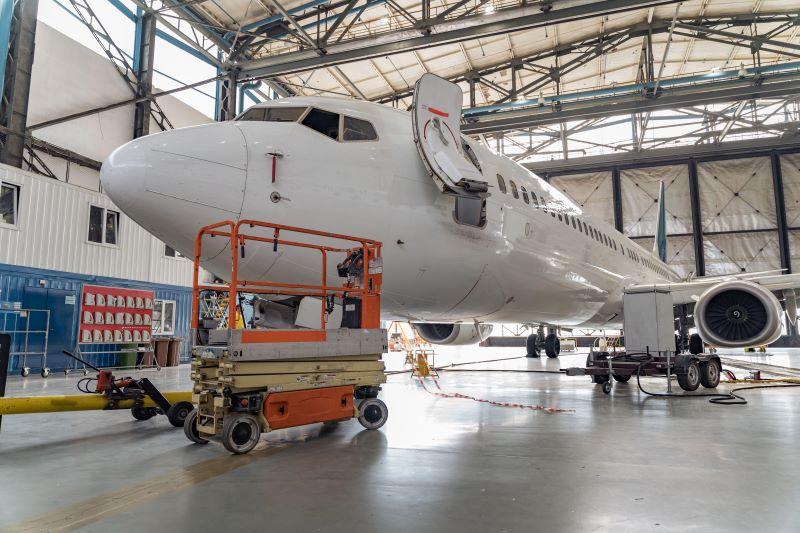Daily Memo: For The Aftermarket, It’s The Best Of Times And Worst Of Times

The commercial aviation aftermarket is growing at a brisk pace but faces vexing supply chain challenges.
The commercial aviation aftermarket is booming thanks to a confluence of robust air travel demand, deferred aircraft retirements, and corresponding increased shop visits.
Investment bank Jefferies estimates that aftermarket revenue reached 109% of 2023 levels in the first quarter of 2024 and in an April 10 research report raised the possibility of a “supercycle” for the next three to four years.
The atmosphere at Aviation Week Network’s MRO Americas event in Chicago last week reflected that bullishness in some respects. “Our segment of the industry is setting records,” AAR Corp. CEO John Holmes said during the event’s keynote address.
Yet he also acknowledged that the MRO segment faces some formidable challenges. The shortage of aircraft technicians that began before the pandemic has worsened, with AAR estimating a 25% shortage over the next five years. While the company is partnering with eight different schools to train new talent, “with so many new people there is a learning curve,” he said.
Panelists in the engine segment expressed concern about the state of the supply chain. Jim Berbert, SVP of component services at AAR, rated the supply chain 4 to 5 on a 10-point scale, while Lewis Prebble, president of airlines and fleets at StandardAero, gave it a 2 to 3. “It’s really, really bad,” Delta Airlines MD of engine supply chain Ann Ni said of the supply chain. She noted that engine shop visit turnaround times currently are more than 200 days, which she described as “a huge waste.”
In a survey taken at MRO Americas, the top supply chain concern by a wide margin was parts availability at 57%, with OEM production rates and durability issues No. 2 at 22%, followed by workforce and skills shortages at 17%.
One way to alleviate supply chain bottlenecks would be to increase the use of Parts Manufacturer Approval (PMA) components, which are typically 20% to 80% cheaper than OEM parts but roughly equivalent in quality. In an April 12 note to clients, Melius Research’s Robert Spingarn describes PMA parts as “akin to generic drugs in that they are nearly identical to the original.”
Unsurprisingly, original equipment manufacturers (OEMs) are ambivalent about wider uptake of PMA parts in the commercial aerospace sector, since those components are often reverse engineered from OEMs and “break their monopolistic pricing power by providing a secondary source of parts,” Spingarn notes.
Lessors may also oppose greater adoption of PMAs given their focus on asset transferability and the tendency of certain jurisdictions, such as Asia-Pacific, to limit the use of PMA components. The main issue for lessors is that it is possible upon termination of a lease, the PMA parts in an aircraft engine that are permitted in North America, for instance, may have to be swapped out for OEM parts before the engine can be re-leased to an airline in a jurisdiction that tightly controls the use of PMAs.
The idea to boost use of PMAs is not new, but this time the gravity of supply chain challenges may lead to greater industry acceptance. Jefferies observes that acceptance of PMAs is growing, “particularly on older platforms where there is a fleet of available material.” The investment bank further notes that “the PMA business is gaining traction with lessors and in China.”
Companies that would benefit from increased PMA use on the Leap and GTF engine programs include AAR as well as Heico, which is the largest provider of such components in the industry. With Jefferies estimating PMA penetration of the market at just 3%—though that has doubled from about 1.5% 15 years ago—companies providing these components have a significant market opportunity in the years ahead.
Ni sees opportunity for PMA parts in the so-called “non-critical” segment that are not essential for an airplane to fly. “I see less control from the OEM perspective on those parts,” Ni said.
Meanwhile, Berbert said that “there is a capacity out there, and I’m not sure OEMs are taking the steps they need” to fulfill it. With that in mind, in the commercial aftermarket, “now PMA plays a part, period. Now it creates an ability to get a part.”





